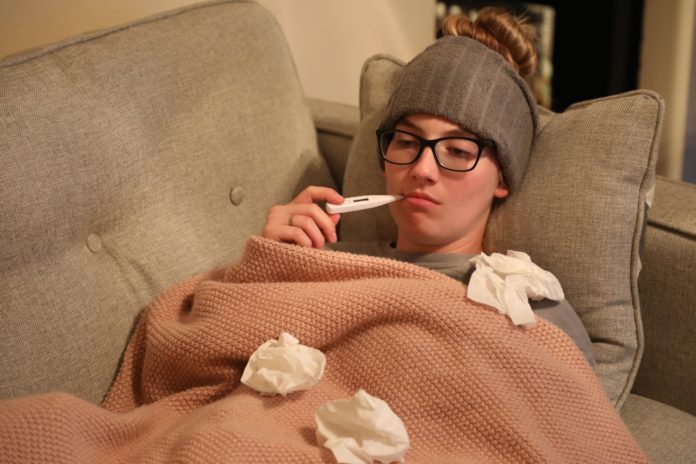
By Ana Ruiz Brictson | Staff Writer
For the past three weeks, many students have shown up to class coughing and showing symptoms similar to those of COVID-19. When they’re tested, though, their results are negative.
“This is the time of year that we see many different viruses usually,” Dr. Sharon Stern, Baylor’s medical director of Health Services, said in an email. “I believe that people have been so starved for interaction the last 18 months that we are all now clustering together and spreading (mostly non-COVID germs).”
According to Stern, there is some speculation that since people wore masks for so long and were protected by them from viruses, now that people are being exposed to them, the immune system has to learn how to fight them again.
What Health Services has been noticing is that there are several viral cases going around that are neither influenza nor COVID-19.
Health Services has also been seeing many cases of strep throat, but these are normal numbers compared to other years. It is paying more attention to these infections to ensure they are not COVID-19-related.
Stern recommended that if people are very ill, they should stay home to get better and avoid exposing others. If students are experiencing mild symptoms that do not include coughing or having a fever, then they could attend class if they have received a negative COVID-19 test. She also said that those who choose to attend class should always keep their mask on during class and in any public space.
“Viral infections are by far the most common cause of illnesses that consist of respiratory symptoms,” Stern said. “They tend to start with a sore throat or congestion and may develop into a cough, along with headache, fatigue, body aches and possibly fever. Symptoms tend to be better and then worse during the day, often several times each day, making it feel like a rollercoaster. The first three to four days tend to be when people feel the worst. Most viral respiratory infections last seven to 10 days.”
Stern said her advice to those starting to have similar symptoms was to rest, isolate and drink plenty of water.
“It is fine to take some Tylenol, Mucinex, Flonase, but the combination cold medicines can lead to problems, so I do not recommend them,” Stern said. “If you are not well enough to go to class, make sure to email your professors to let them know.”
Honduras junior Nicole Matute said she had strep throat on Sept. 21. She said she began to feel ill the day before she tested positive for the virus.
“I tested positive for strep, and they gave me medication for it,” Matute said, referring to Baylor’s Health Center. “I felt bad all the way through Sunday.”
Matute said the health portal did not have any space for appointments Thursday and Friday, when she was feeling sick. She said she “was just told to buy cough drops.”
Matute said the doctor that attended to her said it was fine to go to all of her classes.
“One of my professors said to not come to class if I have strep,” Matute said.
Wisconsin junior Sam Beyer said he felt ill two weeks ago and tested positive for strep throat. He said he got tested three times that week in order to confirm that he did not have COVID-19.
“It was a little nerve-wracking at first because I thought it was COVID-19,” Beyer said.
Beyer also said once he knew that he had strep throat, he called a doctor and was told to pick up antibiotics and stay home to rest.
According to Baylor’s COVID-19 Testing Information website, those who are experiencing symptoms related to COVID-19, regardless of their vaccination status, should make an appointment to get tested.





